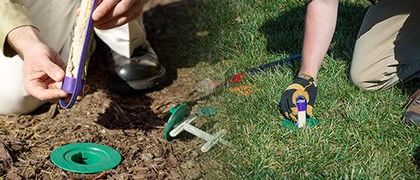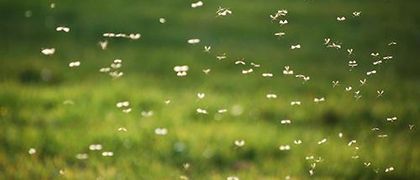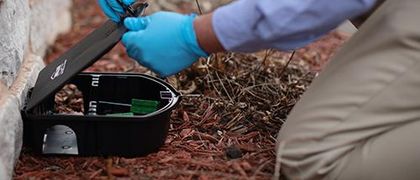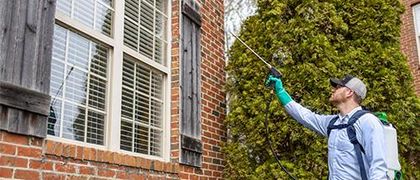What do clover mites look like?
- Size: Approximately .75 mm long
- Color: Reddish brown to dark green-brown
- Body structure: Oval-shaped body, eight legs, (their first pair of legs are very long and are often mistaken for antennae) and featherlike plates or scales on abdomen
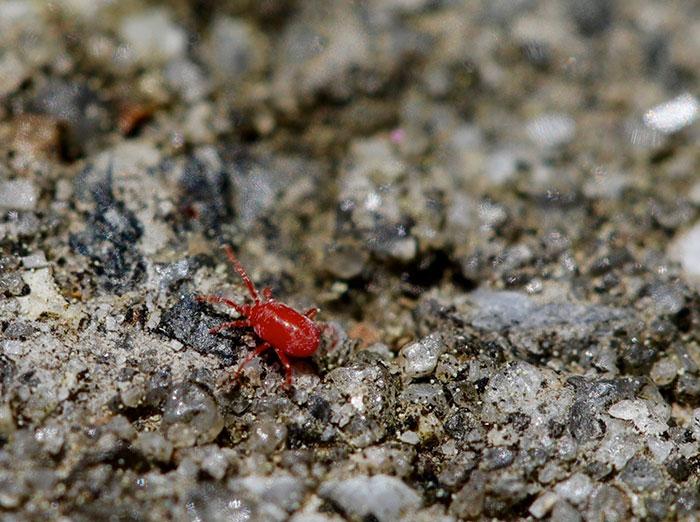
Characteristics of clover mites
Clover mites develop from unfertilized eggs and their population is almost entirely females. In fact, no male clover mites are known to exist. Clover mites progress through four stages of development: larva, protonymph, deutonymph, and adult.
Females lay approximately 70 eggs each, singly or in masses, in areas that are dry, protected, and receive enough sun exposure. Eggs hatch during spring and fall when temperatures exceed 70 degrees Fahrenheit and begin feeding right away on plant juices.
Clover mites typically only live a few weeks, but five or six generations hatch each year. Adult clover mites and eggs overwinter once it grows cooler in the fall.
When are clover mites most active?
Where are clover mites commonly found?
Since clover mites are plant eaters that consume clover, over-fertilized grass, and many types of plants, it's not uncommon to find them in the yard. Outside, they are also commonly found under siding, loose bark, on foundations, and beneath siding.
They may also enter homes in large numbers, either by accident or in search of moisture or a warm place to overwinter. Midwesterners often find them crawling on walls and around windows and doors. Once inside, they tend to find cracks and protected areas to lay eggs.
What do clover mites eat?
According to the National Pest Management Association, clover mites eat more than 200 different plant species. This includes some flowers.
Are clover mites dangerous?
Clover mites are not dangerous; they do not bite people or pets, and do not transmit or spread disease. They may stain light-colored walls, carpet, fabrics, and paper if crushed.
Clover mites do not kill plants when they feed, but they may cause discoloration when they suck out plant juices.
Why do I have a clover mite problem?
As we noted above, clover mites are attracted to over-fertilized grass so if this describes your lawn, that's probably why. These nuisance pests become a problem inside homes when there's easy access in. If you have cracks, gaps, or openings these tiny mites can crawl through, there's a good chance you'll see them crawling around and even overwintering indoors.
How do I get rid of clover mites?
If you're wondering how to get rid of clover mites, the answer is simple- call us at Miller Pest & Termite. Our locally owned and family-operated pest control company offers reliable pest control services in Iowa, Missouri, Kansas, and Nebraska that are designed to eliminate clover mites and other pests that infest homes in our region. Give us a call today!
How can I prevent a clover mite problem?
To prevent a clover mite infestation in your home or on your property, our pest control specialists recommend the following clover mite prevention tips:
- Create a grass-free zone around the perimeter of your house
- Clear away plants and flowers that attract clover mites
- Check to make sure your lawn is not over-fertilized
- Seal up potential exterior cracks around doors, windows, and the foundation
- Install door sweeps and weather stripping
- Repair or replace torn window screens


Get Help Now!






